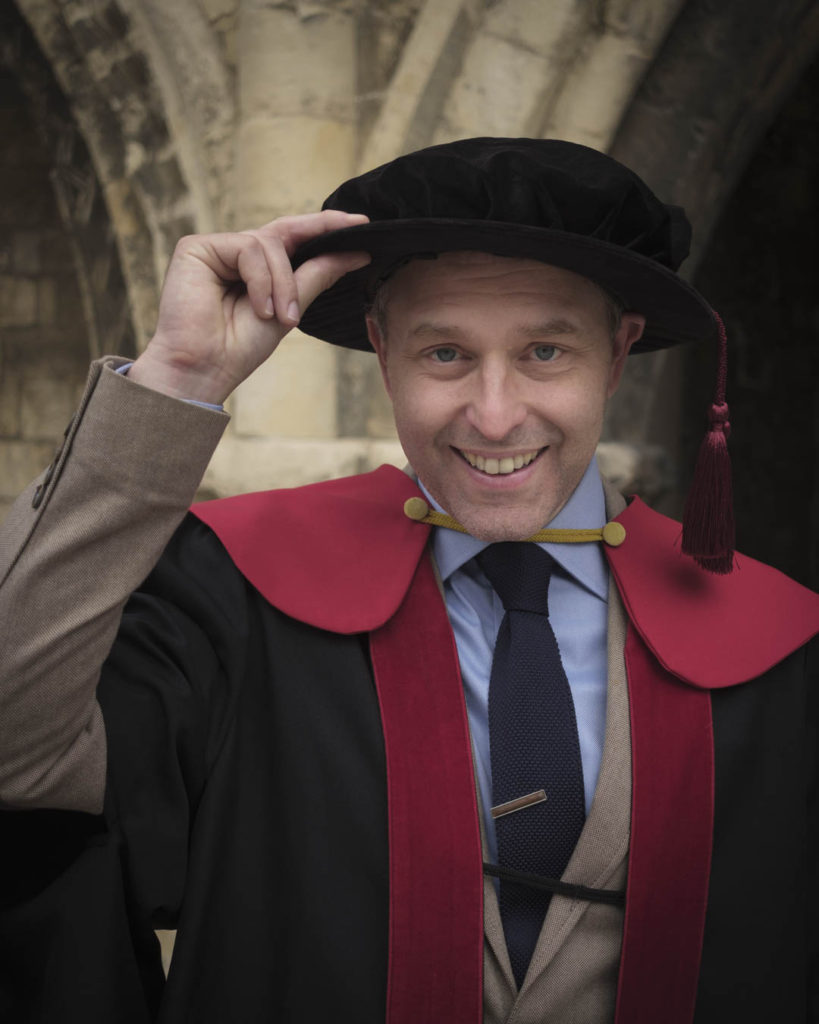On the morning of Wednesday 24th August I was hooded by the Vice-Chancellor of the University of Kent along with eight other PhD graduands and a host of BA, MA, and PGDip recipients. The title of the thesis, which was read in full just before I received my degree is Mythical Middle England: Illuminating the Aesthetic Potential of English Non-Places Through Narrative Cinema. It has been a long process, and one which has changed the way I think about my topic of study, the way I approach my work and my sense of self. I don’t feel like recounting much about the thesis itself in this post right now, but I do want to cite the acknowledgements publicly here.
I have many people to thank for helping me reach this stage in the PhD, and my continuing artistic voyage into deepest Middle England: firstly Lavinia Brydon for her unflagging guidance and support throughout bewildering changes in global and personal circumstances, Frances Kamm and Murray Smith for stepping in towards the end of the process to help me over the line, Richard Misek and Mattias Frey for their guidance at key points in the earlier stages, Lawrence Jackson for film folklore tips, and Angela Whiffen for interpreting university administrative liturgy into vernacular speech. The time you have all given me is precious.
Resources are also useful, especially for PAR projects, and I would like to thank the School of Arts and the University of Kent for the Vice-Chancellor’s Scholarship award for the financial support.
Also within the field of academia, I would like to thank Dr. Jane Adams for our conversations about healing with water and Dr. Catherine Robson for encouraging my academic and teaching career more generally.
Outside the university, a great many people have given their time and their skills to make the creative output of this project possible. I acknowledge that contributions of cast, crew, and documentary subjects in the credits of the films but I cannot thank cinematographer Alexandru Grigoras, editor Svitlana Topor, and script editor Margaret Glover enough times for their contributions to the films, and for being the kind of collaborators who save me from bad filmmaking decisions.
The cartographical parts of this study would have been impossible without the help of Beth Manghi, whose GIS coding helped me plot the settings of British films.
This written thesis and the two films are all dedicated to the memory of Dr. John Harcup, who was my grandfather’s GP, and who later became my documentary subject, historical adviser to the short film Water Cure, a supporter, and a friend. It is rare to meet someone who blends a natural authority and the power to make things happen with curiosity and good humoured humility. He is missed.
Immediate family have also been crucial. David and Leonie Creighton for helping with outlandish requests, storage, and places to sleep, Duncan Graham and my sisters Caitlin and Rhianon Graham for keeping me moving both physically and psychically, and of course Courtney Hopf for more than twenty years of shared growth, enduring the demands of my muse, constant notes and reassurance and, yes, proofreading.



